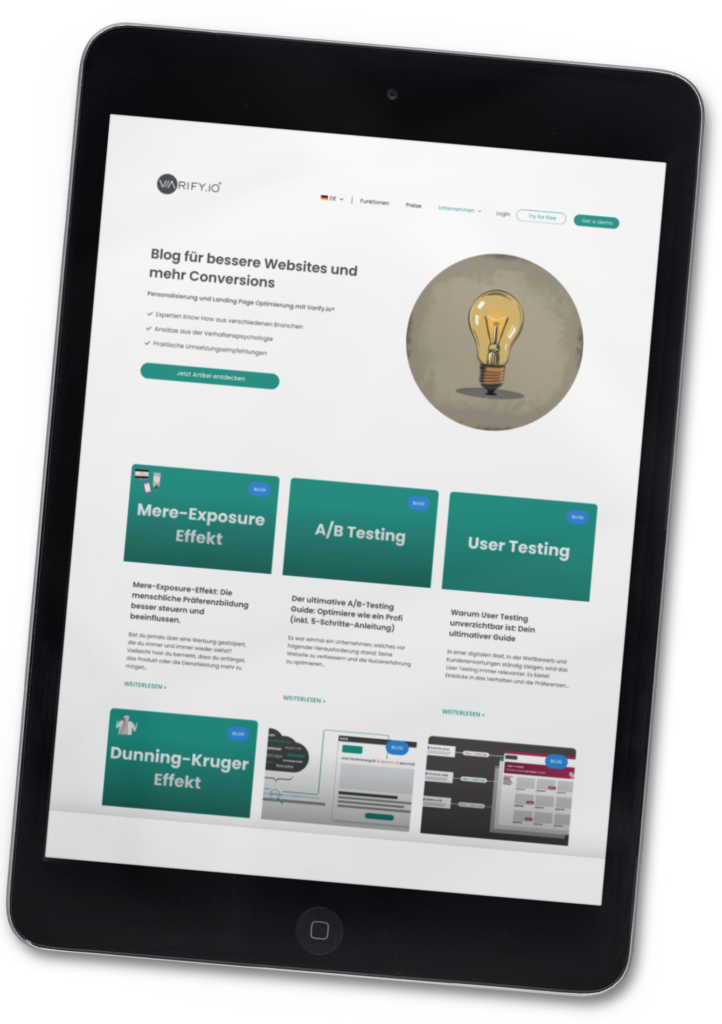In online marketing and e-commerce, the conversion rate is one of the most important key figures that directly reflects the success of a website.
It measures the percentage of visitors who perform a desired action, be it a purchase, a newsletter subscription or filling out a contact form.
A high conversion rate not only means that your website is efficient, but also that you are successfully addressing your target group and meeting their needs. This number is therefore crucial for optimizing your marketing strategies and maximizing your ROI.

Table of contents
Conversion rate calculator:
Your conversion rate: 5.00%
The calculation of the conversion rate
The conversion rate is a simple but meaningful key figure. It is calculated by dividing the number of conversions (e.g. completed purchases or registrations) by the total number of website visitors and is then multiplied by 100 to obtain the percentage:

Example:
Imagine your website had 1,000 visitors and 50 of them completed a purchase. The conversion rate would be calculated as follows

This figure is particularly important as it shows you how well your website or your marketing measures are converting visitors into customers. A low conversion rate can indicate that there is a need for optimization - be it in the design, in the user guidance or in addressing the target group.
A particularly helpful tool for tracking the conversion rate is Google Ads Conversion Tracking. Here you can see exactly which ads or campaigns are most effective and adjust your strategy accordingly.
Factors influencing the conversion rate
The conversion rate is influenced by numerous factors. It goes far beyond the quality of the product or service and includes many technical, psychological and design aspects. Here are the most important influencing factors that you should consider:
1. loading speed of the page
A slow website can put visitors off and cause them to abandon the purchase process. Studies have shown that a delay of just one second in loading time can reduce the conversion rate by up to 7%. Therefore, optimize your website to ensure fast loading times, especially on mobile devices.
2. user experience (UX)
User guidance is a decisive factor. If users have difficulty finding their way around your site or have to search for a long time for the information they want, they will probably leave the site again quickly. Intuitive navigation and a clear design can significantly increase the conversion rate.
3. trust and security
Trust plays a central role in the decision as to whether a user completes a purchase or not. Security certificates, trustworthy payment methods and transparent data protection guidelines are essential. Show your customers that their data is safe with you to increase the conversion rate.
4. mobile optimization
More and more users are visiting websites via smartphones or tablets. A mobile-friendly site is essential today. If your site works poorly on mobile devices or is not displayed correctly, potential customers will quickly lose interest.
Conversion rate optimization: best practices
Conversion rate optimization requires continuous adjustment and monitoring of user interactions on your website. Some common strategies often used in conversion optimization include using Behavior Patterns, which analyze user behavior on your site, and conducting A/B tests.
Behavior patterns help to identify recurring patterns in user behavior, such as which elements on the page receive the most attention or at what point visitors leave the page. These patterns can then be used to make targeted adjustments that improve the conversion process.
However, it is important to emphasize that every change should always be validated through A/B testing. Only by comparing different variants can you ensure that your changes actually lead to an improvement in the conversion rate and do not have unintended negative effects.
Varify.io allows you to carry out A/B tests to improve your conversion rate.
Tools for optimizing the conversion rate
To improve the conversion rate, various tools can be used that provide deeper insights into user behavior and provide targeted support for optimization. Some innovative technologies help to analyze the behavior of users on your site and identify weak points.
1. heatmaps
Heatmaps show you visually which areas of your website receive the most attention. They illustrate where users click, scroll or move their mouse. You can use this data to improve your page structure and call-to-actions in order to increase your conversion rate.
2. session recordings
With Session Recordings, you can track the interactions of users on your site in real time. This makes it possible to understand typical user paths and determine where most abandonments or obstacles occur. These recordings help to identify conversion hurdles and optimize user guidance.
3. clickmaps
Clickmaps not only show you where users click, but also how effective certain elements are on your site. With this information, you can make targeted changes to improve the user experience and increase the conversion rate.
Conclusion
The conversion rate is one of the key performance indicators in online marketing and e-commerce that directly reflects the success of your website and marketing strategy. A high conversion rate shows that you are successfully addressing your target group and offering a seamless user experience. However, optimizing the conversion rate is not a one-off goal, but a continuous process.
By understanding the various influencing factors such as loading speed, design, user guidance and psychological aspects and making targeted adjustments, you can significantly increase the conversion rate. In addition, innovative tools such as heat maps and A/B tests help you to make targeted optimizations, while analyzing the conversion rate across different channels helps you to constantly improve your strategy.
The key to success lies in a data-supported, holistic approach in which every phase of the conversion funnel is continuously checked and optimized.

